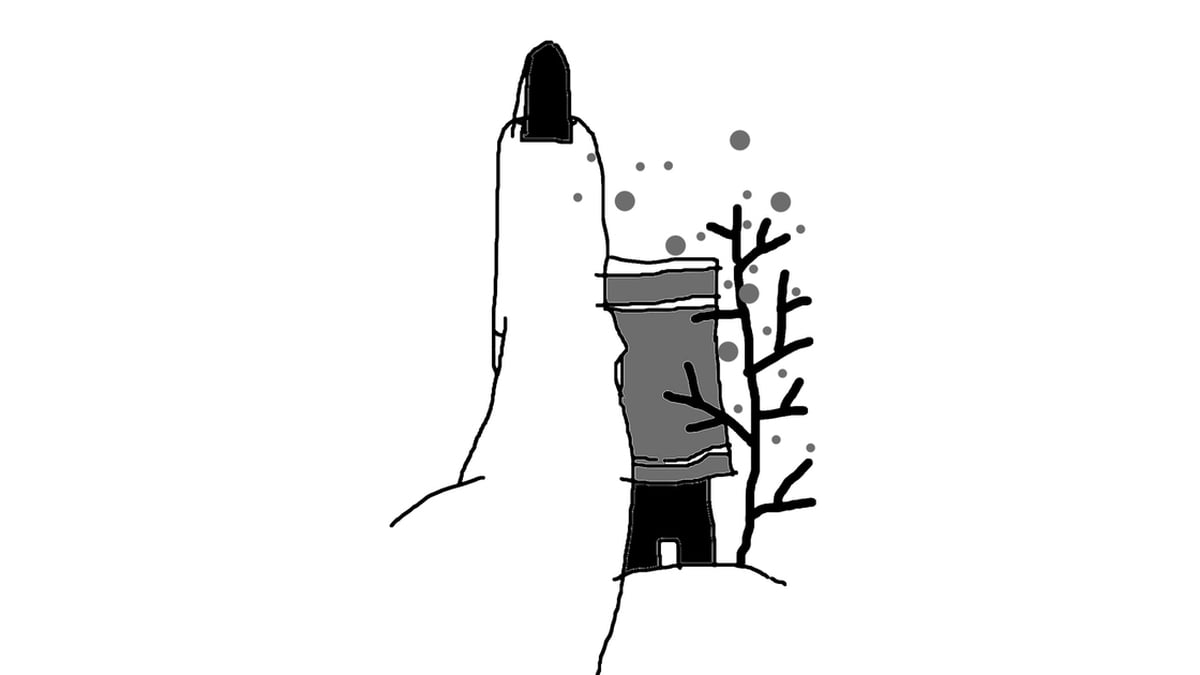According to information from the National Children's Hospital, recently, doctors at the Emergency and Poison Control Department of the National Children's Hospital received a 2-month-old baby girl who was admitted in a state of cyanosis, respiratory arrest, and cardiac arrest before arriving at the hospital. Despite the doctors' efforts to save her, the baby did not survive.
According to the family, the child was their third child, born prematurely at 32 weeks, weighing 1.1kg at birth. After birth, the child was screened at the hospital and no abnormalities were detected, and his weight gain was appropriate for his age.

Choking on milk is common in infants (photo source: National Children's Hospital).
Before being admitted to the hospital, the child showed no signs of abnormality. On the morning of February 21, the mother fed the child with milk from a bottle twice at 5am and 6am, but the child drank little, vomited milk, cried, and had a bloated stomach.
At around 9am, the child was found to be cyanotic, irritable and unresponsive. The family took him to the Emergency and Poison Control Department of the National Children's Hospital.
BSCK2 Pham Thi Thanh Tam - Deputy Head of the Department of Emergency and Anti-Poison, National Children's Hospital said that the child was admitted to the hospital in a state of respiratory and cardiac arrest and was immediately resuscitated.
Endotracheal intubation showed a small amount of milk in the oral cavity, but no milk in the airways. Chest X-ray showed diffuse right lung parenchymal damage.
Gastric juice contains a lot of undigested milk (even 4 hours after eating). X-ray results show abdominal distension, intestinal loops filled with fluid, this could also be the result of cardiac arrest, but it could also be a pre-existing intestinal inflammation that makes the baby more prone to choking and regurgitation than normal healthy babies.
According to Dr. Pham Thi Thanh Tam, choking on milk is one of the common accidents in young children, especially children under 2 years old. This is a phenomenon where milk flows into the airways, making it difficult for the child to breathe, turning purple and possibly causing respiratory arrest. If not treated promptly, it can affect the child's life.
According to doctors, the cause of choking on milk in children is due to the child not feeding or eating in the correct position; feeding too much, feeding the child while they are crying or coughing.
Too much breast milk makes it difficult for the baby to swallow, the rubber nipple has a hole that is too wide, causing a lot of milk to flow. Premature babies have poor sucking and swallowing reflexes. Babies with congenital defects in the throat such as cleft lip, cleft palate, etc.
Signs: When the baby is breastfeeding (or after breastfeeding), he suddenly coughs, turns purple and faints. Milk may be seen flowing through the nose and mouth.
For premature babies, especially malnourished babies, babies with facial deformities, and babies with reduced muscle strength (myasthenia gravis), the cough reflex is weaker.
The signs of choking on milk in these children are quite quiet, mainly manifested by purple symptoms. The first stage will be purple around the lips, around the corner of the nose, can breathe quickly, or breathe slowly, stop breathing.
Doctors say that proper treatment in the first few minutes after a baby chokes is extremely important, helping the baby quickly escape the dangerous situation. When a baby chokes on milk, mothers need to stay calm and give first aid according to the following steps.
If the child can still cough: Tilt the child's head to one side, wipe the milk from the child's nose and mouth. Encourage the child to cough. Never use your hands to pick the child's throat.
If the child cannot cough but is conscious, lay him or her face down with the head lower than the chest on the inside of the forearm resting on the thigh. Keep the head and chin in a straight position.
Using the heel of your hand, give five back blows between the child's shoulders, from top to bottom and forward. After the back blows, place your other forearm on the child's back, holding the head and neck firmly with your hand.
Then, carefully turn the baby over (holding the head and neck), keeping the baby lying on his back on the inside of your forearm against your thigh. Keep the head lower than the body.
Push your chest 5 times 1⁄2 below the sternum, just below the inframammary line. Each push lasts about 1 second, trying to create enough pressure to get the milk out.
Repeat the cycle of 5 back blows and 5 chest thrusts until the baby starts breathing again or if the baby does not respond.
If the child is unconscious, immediately call for help from relatives, emergency medical (call the phone, turn on speaker mode and follow the instructions). The rescuer can sit or kneel depending on the conditions.
Step 2, immediately perform CPR on the child: CPR: position ½ below the sternum, depth 1/3 of the anterior-posterior diameter of the chest. 30 CPR - 2 CPR (If there is only 1 person). 15 CPR - 2 CPR (If there are ≥ 2 rescuers)
Mouth-to-mouth or mouth-to-nose resuscitation for children: Blow in for 1 second, paying attention to observe the child's chest rising. Repeat 2 times. If the chest does not rise, repeat the head tilt and chin lift movements, adjusting the head tilt position.
Mouth – Nose: Take a normal breath, cover the rescuer’s mouth tightly over the child’s mouth and nose. Mouth – Mouth: Take a normal breath, cover the rescuer’s mouth tightly over the child’s mouth. Pinch the nostrils with the thumb and index finger, and place the hand on the child’s forehead.
Continue first aid on the spot until the child regains consciousness or medical assistance arrives.
Source



































































































Comment (0)